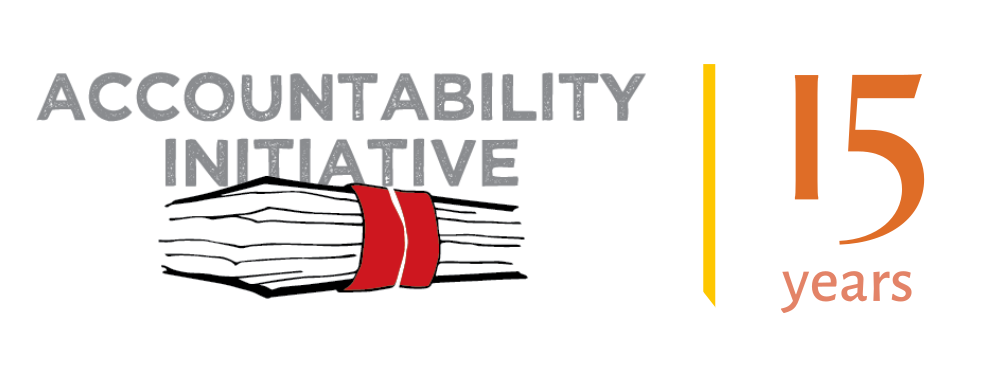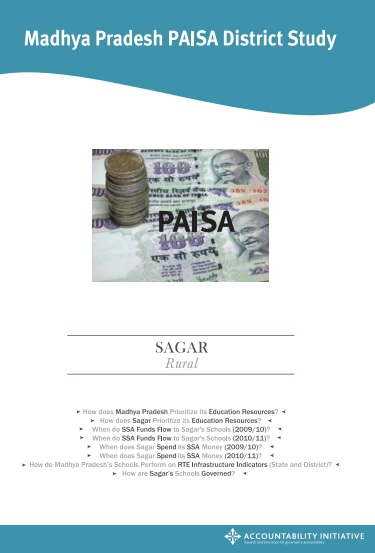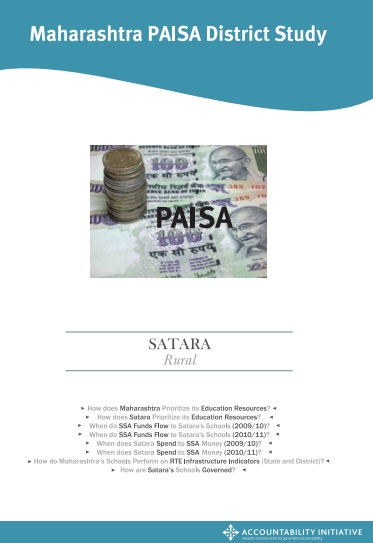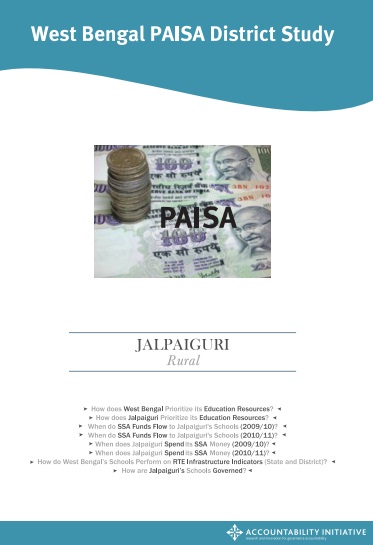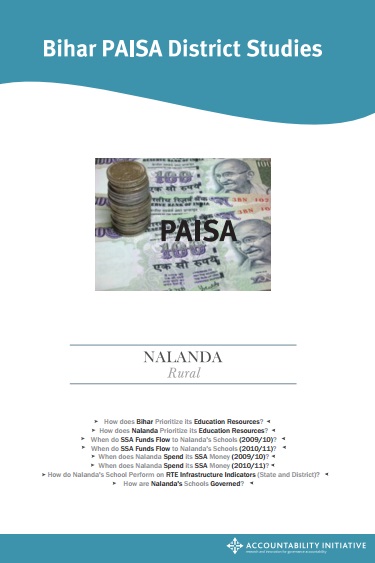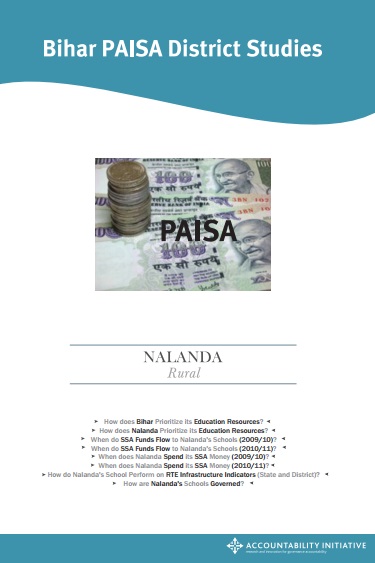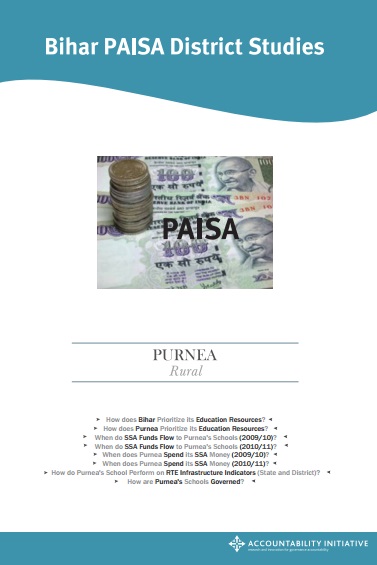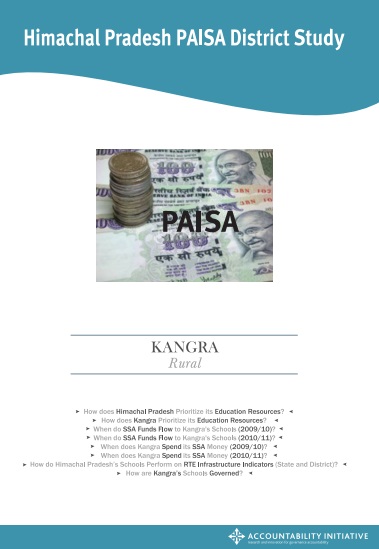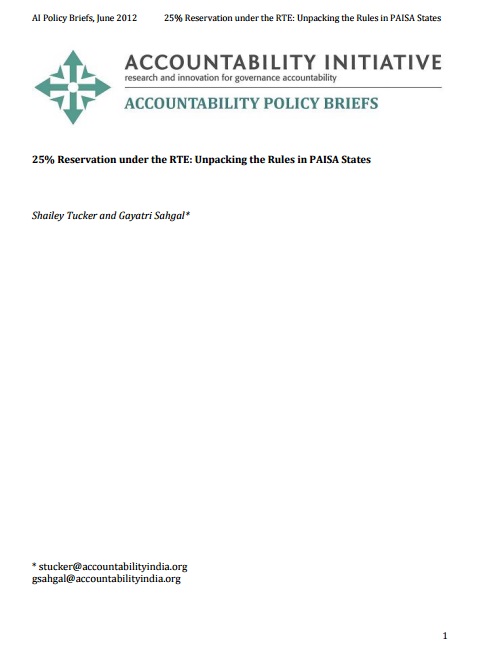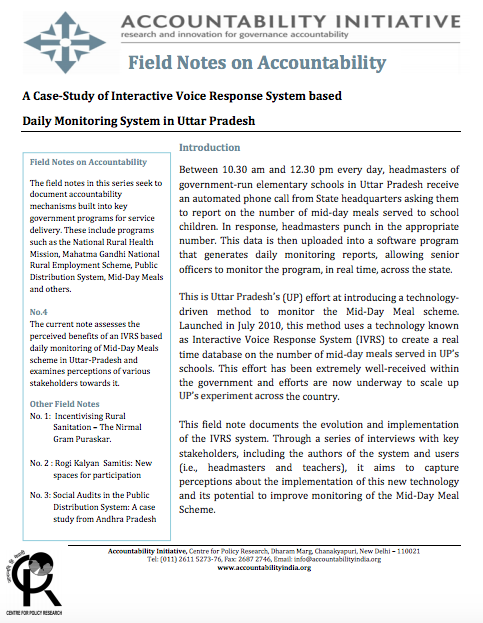This report analyses education resourcing in Madhya Pradesh and Sagar; and examines fund flows, expenditures, infrastructure and governance of schools in Sagar.
Sector Scheme Level: Education
PAISA District Study: Satara, Maharashtra
This report analyses education resourcing in Maharashtra and Satara; and examines fund flows, expenditures, infrastructure and governance of schools in Satara.
PAISA District Study: Jalpaiguri, West Bengal
This report analyses education resourcing in West Bengal and Jalpaiguri; and examines fund flows, expenditures, infrastructure and governance of schools in Jalpaiguri.
PAISA District Study: Medak, Andhra Pradesh
This report analyses education resourcing in Andhra Pradesh and Medak; and examines fund flows, expenditures, infrastructure and governance of schools in Medak
PAISA District Study: Nalanda, Bihar
This report analyses education resourcing in Bihar and Nalanda; and examines fund flows, expenditures, infrastructure and governance of schools in Nalanda.
PAISA District Study: Purnea, Bihar
This report analyses education resourcing in Bihar and Purnea; and examines fund flows, expenditures, infrastructure and governance of schools in Purnea.
PAISA District Study: Kangra, Himachal Pradesh
This report analyses education resourcing in Himachal Pradesh and Kangra; and examines fund flows, expenditures, infrastructure and governance of schools in Kangra.
25% Reservation under the RTE: Rules in PAISA States
The Right To Education Act mandates a minimum of 25% reservation for disadvantaged groups and economically weaker sections in private unaided schools. This Brief analyses the key provisions for the policy’s implementation in the PAISA states.
Interactive Voice Response Daily Monitoring System
The field notes series seeks to document the implementation of accountability mechanisms built into key government programs for service delivery. Between 10.30 am and 12.30 pm every day, headmasters of government-run elementary schools in Uttar Pradesh receive an automated phone call from state headquarters asking them to report on the number of mid-day meals served to school children. In response, headmasters punch in the appropriate number. This data is then uploaded into a software program that generates daily monitoring reports, allowing senior officers to monitor the program, in real time, across the state
This is Uttar Pradesh’s (UP) effort at introducing a technology-driven method to monitor the Mid-Day Meal scheme. Launched in July 2010, this method uses a technology known as Interactive Voice Response System (IVRS) to create a real time database on the number of mid-day meals served in UP’s schools. The current note assesses the perceived benefits of an IVRS based daily monitoring of Mid-Day Meals scheme in Uttar Pradesh and examines perceptions of various stakeholders towards it
A Tale of Two Schools: Untying Tied-Grants in SSA
SSA norms dictates that the proposed allocation comes as tied funds meant only for specific purposed. By comparing the needs of two schools in Nalanda District, Bihar, “A Tale of Two Schools” looks at whether this is the best approach for money to be allocated and spent.
